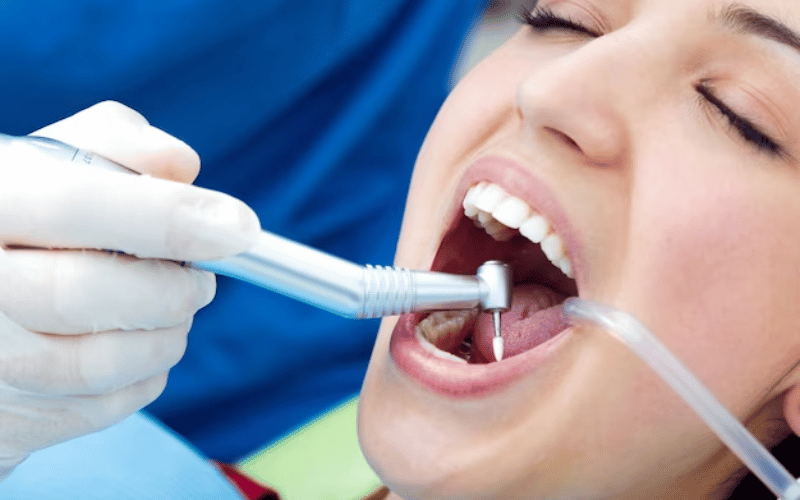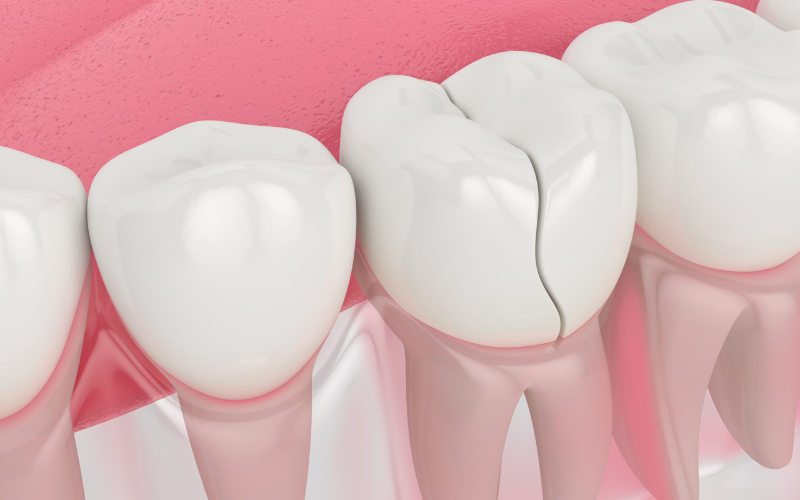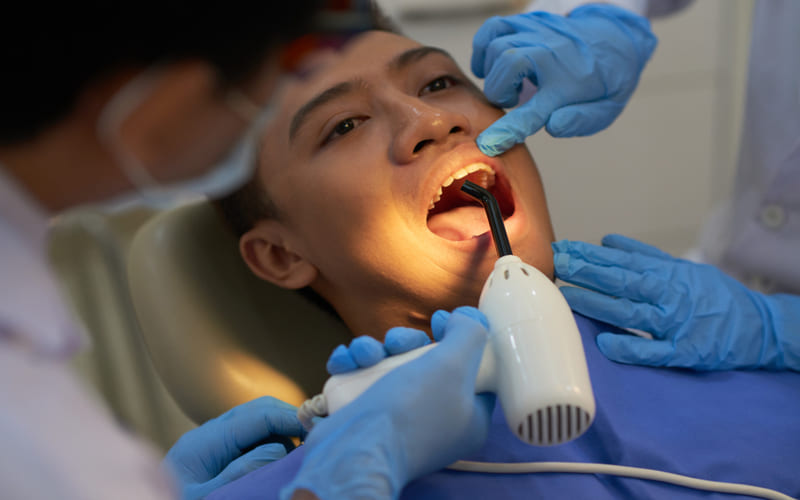1520 Green Oak Place, Suite B Kingwood, Tx 77339
How Long Does Tooth Restoration Last?

Tooth restoration involves repairing and restoring damaged or decayed teeth to regain their natural form, function, and aesthetics. Standard methods include fillings for minor cavities, crowns to cover extensively damaged teeth, bridges to replace missing teeth, and implants for permanent tooth replacement.
Restoration techniques aim to preserve tooth structure, prevent further decay, and enhance oral health. Dentists utilize materials like porcelain, composite resin, or metals to reconstruct teeth, ensuring functionality and an improved appearance while maintaining overall dental well-being.
Regular check-ups and proper oral hygiene are crucial to maintain restored teeth for long-term dental health.
Different Types of Tooth Restoration
Tooth restoration encompasses various procedures to repair damaged, decayed, or missing teeth, ensuring functionality and aesthetics. Key types of restoration methods include:
1. Fillings: Typically made from composite resin, amalgam, or porcelain, fillings repair minor cavities caused by decay, restoring the tooth’s structure.
2. Crowns: These cover extensively damaged or weakened teeth, providing strength and protection. They’re often crafted from porcelain, metal alloys, or a combination of materials.
3. Bridges: Used to replace missing teeth by anchoring artificial teeth to adjacent natural teeth or dental implants, restoring both appearance and function.
4. Implants: Surgically placed into the jawbone, implants serve as sturdy foundations for artificial teeth, mimicking natural tooth roots for durable tooth replacement.
5. Veneers: Thin shells, usually made of porcelain, are bonded to the front surface of teeth to improve appearance by correcting discoloration, shape, or minor misalignments.
6. Dentures: These removable prosthetic devices replace multiple missing teeth and surrounding tissues, aiding in chewing, speech, and maintaining facial structure.
Each type of restoration aims to address specific dental issues, with materials and techniques chosen based on individual needs and oral health conditions. Regular consultations with a dentist help determine the most suitable restoration method for optimal dental care.
Factors That Affect the Durability of Tooth Restoration
1. Material Selection: Choosing materials used in tooth restoration significantly impacts durability. High-quality materials like porcelain, gold, or ceramic compounds offer better longevity than cheaper alternatives. Proper material selection based on the tooth’s location, function, and individual patient needs is crucial for lasting results.
2. Placement and Technique: The skill and precision of the dentist during the restoration process are vital. Accurate placement, proper bonding, and meticulous technique enhance the restoration’s durability. A well-fitted filling, crown, or implant ensures longevity and reduces the risk of complications.
3. Oral Hygiene Maintenance: Effective oral hygiene practices, including regular brushing, flossing, and professional cleanings, significantly impact restoration durability. Poor oral hygiene can lead to decay, gum disease, or deterioration around restorations, compromising their longevity.
4. Chewing Habits and Forces: Excessive pressure from habits like teeth grinding (bruxism) or using teeth for non-standard functions (e.g., opening packages) can weaken restorations. Custom mouthguards may be recommended to protect restorations for individuals with bruxism.
5. Adjacent Tooth Health: The health of neighboring teeth and surrounding tissues can influence restoration durability. If adjacent teeth are compromised by decay or gum disease, it may impact the stability and longevity of the restoration.
Regular dental check-ups allow dentists to assess the condition of restorations, address potential issues early, and offer guidance on maintaining optimal oral health for long-lasting tooth restorations.
How long does tooth restoration last?
The longevity of tooth restorations can vary significantly based on several factors, including the type of restoration, materials used, oral hygiene practices, individual habits, and the patient’s overall oral health. Here’s a general guideline for the approximate lifespan of common tooth restorations:
1. Fillings: Typically, composite fillings can last around 5 to 10 years, while amalgam (metal) fillings might last longer, often up to 10 to 15 years or more, depending on various factors.
2. Crowns and Bridges: Well-maintained crowns and bridges made from durable materials such as porcelain fused to metal or zirconia can last approximately 10 to 15 years or even longer with proper care.
3. Dental Implants: Dental implants can last a lifetime if properly cared for. However, the crown or restoration placed on the implant might need replacement or adjustment due to wear and tear over time.
4. Veneers: Porcelain veneers can last around 10 to 15 years with good care, but they might require replacement due to chipping, cracking, or general wear.
5. Dentures: Traditional dentures may last around 5 to 10 years, while implant-supported dentures have a longer lifespan with proper maintenance.
It’s essential to note that these estimations are general guidelines, and individual cases can vary widely.
Regular dental check-ups, good oral hygiene practices, avoiding habits that stress the restorations (like teeth grinding), and following your dentist’s recommendations can significantly extend the lifespan of tooth restorations.
Ultimately, the longevity of a restoration depends on several factors and can differ from person to person.
Tips for Prolonging the Lifespan of Your Restored Tooth
To maximize the lifespan of your restored tooth, consider these tips:
1. Excellent Oral Hygiene: Brush your teeth twice daily and floss daily to prevent plaque buildup. This helps maintain the health of your gums and the integrity of your restorations.
2. Regular Dental Check-ups: Visit your dentist for routine and professional cleanings. Your dentist can monitor the condition of your restorations and address any issues early.
3. Avoid Hard Foods and Habits: Limit hard or sticky food consumption that can damage restorations. Avoid using your teeth for non-standard functions like opening bottles or tearing packages.
4. Wear a Mouthguard: If you grind or clench your teeth (bruxism), wear a custom mouthguard prescribed by your dentist to protect your restorations from excessive forces during sleep.
5. Healthy Lifestyle Choices: Smoking and excessive alcohol consumption can impact oral health and the longevity of restorations. Maintain a healthy lifestyle to support overall oral health.
6. Watch for Changes: Be vigilant for any changes in your restored tooth, such as sensitivity, pain, or changes in appearance. Notify your dentist promptly if you notice anything unusual.
7. Follow Dentist’s Advice: Listen to your dentist’s recommendations regarding care for specific restorations. They may provide tailored instructions for optimal maintenance.
By following these guidelines and maintaining good oral hygiene practices, you can significantly prolong the lifespan of your restored tooth and reduce the need for premature repairs or replacements.
Regular communication with your dentist is key to ensuring the long-term success of your dental restorations.
In Kingwood, TX, Restorative Dentistry at Dentistry Of Kingwood offers comprehensive solutions for dental restoration needs. By prioritizing excellent oral hygiene, regular check-ups, and mindful habits, individuals can extend the lifespan of their restored teeth.
This commitment to oral health aligns with Dentistry Of Kingwood’s dedication to providing top-notch dental care. Their practice ensures lasting and effective tooth restorations through quality materials, precise techniques, and personalized guidance.
Patients benefit from their expertise, promoting durable restorations and overall oral well-being. Trust Dentistry Of Kingwood in Kingwood, TX, for exceptional restorative dentistry and lasting solutions for your dental health.







